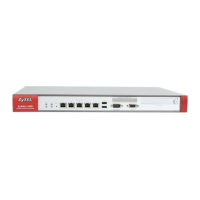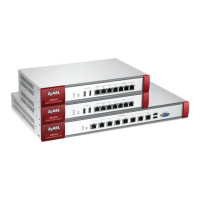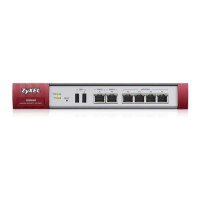Chapter 11 Routing
ZyWALL/USG Series User’s Guide
371
11.5 Routing Protocols Overview
Routing protocols give the ZyWALL/USG routing information about the network from other routers.
The ZyWALL/USG stores this routing information in the routing table it uses to make routing
decisions. In turn, the ZyWALL/USG can also use routing protocols to propagate routing information
to other routers.
Routing protocols are usually only used in networks using multiple routers like campuses or large
enterprises.
•Use the RIP screen (see Section 11.6 on page 371) to configure the ZyWALL/USG to use RIP to
receive and/or send routing information.
•Use the OSPF screen (see Section 11.7 on page 373) to configure general OSPF settings and
manage OSPF areas.
•Use the OSPF Area Add/Edit screen (see Section 11.7.2 on page 377) to create or edit an OSPF
area.
11.5.1 What You Need to Know
The ZyWALL/USG supports two standards, RIP and OSPF, for routing protocols. RIP and OSPF are
compared here and discussed further in the rest of the chapter.
Finding Out More
See Section 11.8 on page 380 for background information on routing protocols.
11.6 The RIP Screen
RIP (Routing Information Protocol, RFC 1058 and RFC 1389) allows a device to exchange routing
information with other routers. RIP is a vector-space routing protocol, and, like most such
protocols, it uses hop count to decide which route is the shortest. Unfortunately, it also broadcasts
its routes asynchronously to the network and converges slowly. Therefore, RIP is more suitable for
small networks (up to 15 routers).
• In the ZyWALL/USG, you can configure two sets of RIP settings before you can use it in an
interface.
•First, the Authentication field specifies how to verify that the routing information that is
received is the same routing information that is sent. This is discussed in more detail in
Authentication Types on page 380.
Table 135 RIP vs. OSPF
RIP OSPF
Network Size Small (with up to 15 routers) Large
Metric Hop count Bandwidth, hop count, throughput, round trip time and
reliability.
Convergence Slow Fast

